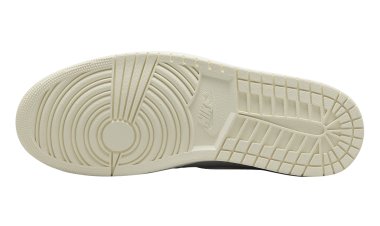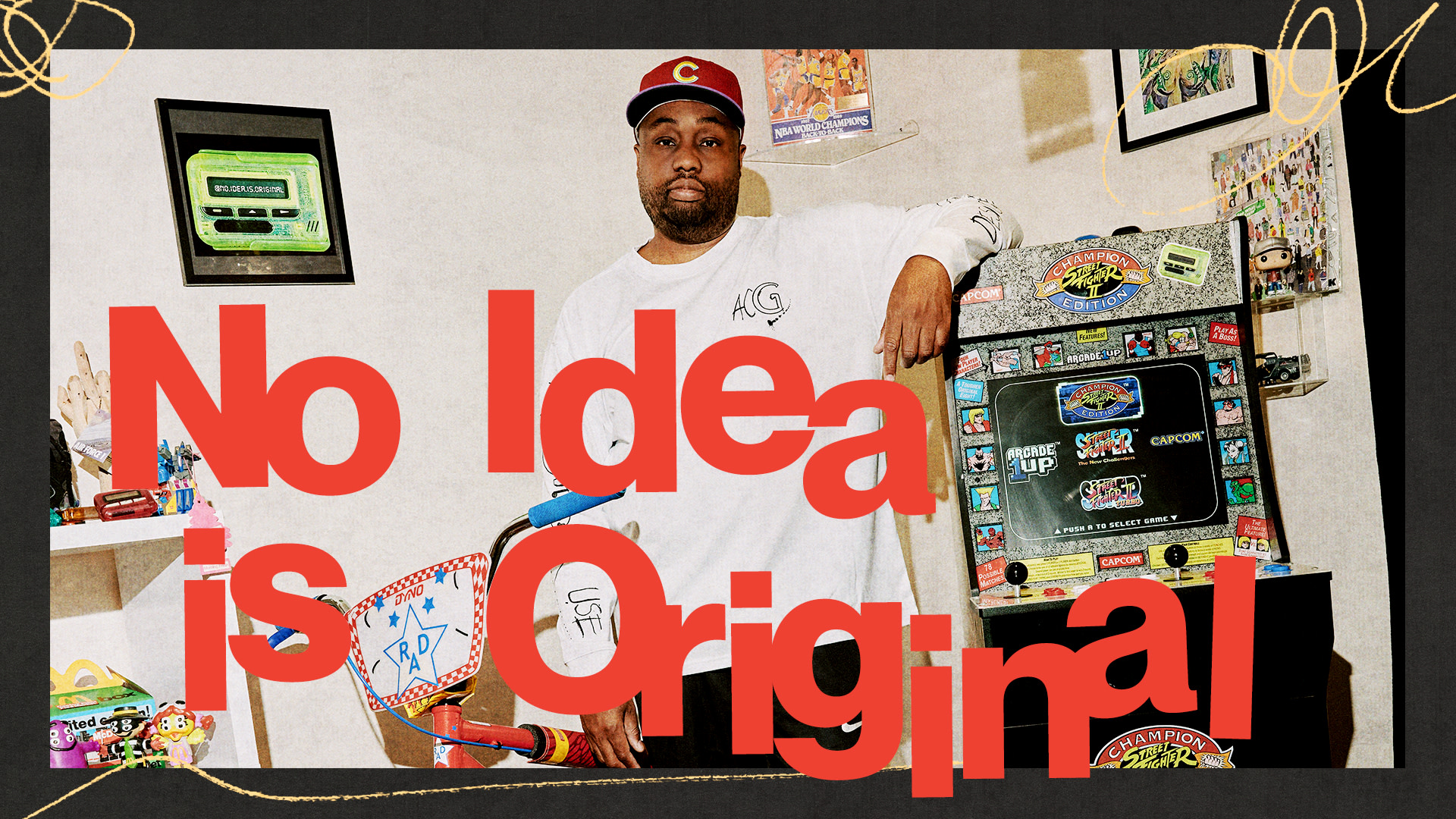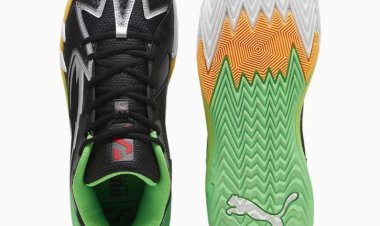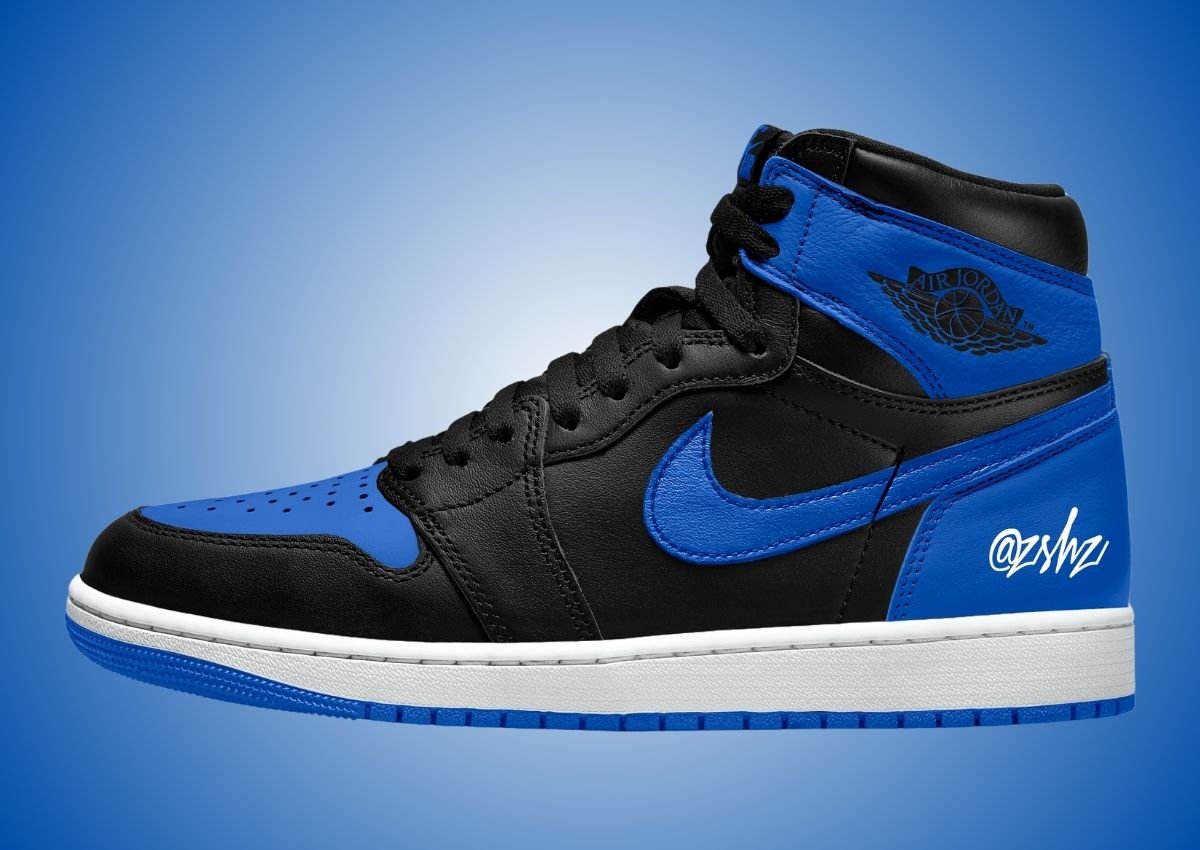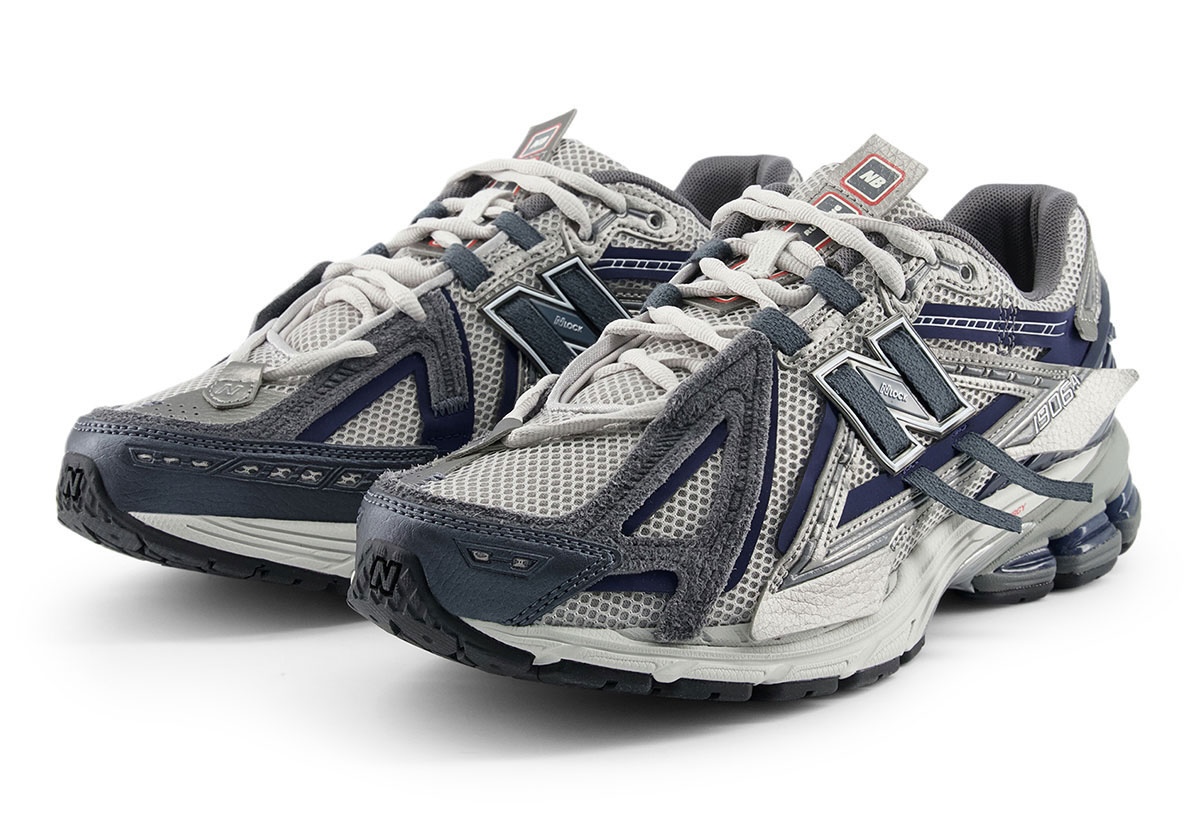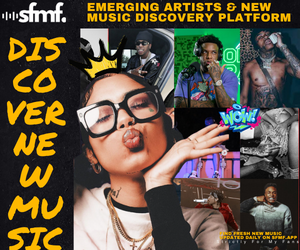Fardin Hazratizadeh and the COMME des GARÇONS x Nike Air Force 1 Mid for Hypebeast's Sole Mates
Fardin Hazratizadeh was in elementary school when his family moved from Iran to the Bay Area. Even with the dual culture shocks of flying halfway around the world to live in a new country and learning a new language, he was able to quickly connect with new friends in his new home through a shared love of sneakers. Hazratizadeh has been into sneakers for almost as long as he can remember — the comments from 12 years ago on his long-dormant Hypebeast Disqus account are proof — and he parlayed that love into the industrial design program at San Fransisco's Academy of Art, an internship at New Balance, a job at Versace and, currently, a role as the head of footwear and accessory design at AMIRI. Though Hazratizadeh has come a long way from the sneaker-obsessed Bay Area kid who used to steal his mom's car to drive to San Fransisco and shop at HUF, his passion and curiosity for sneakers hasn't ebbed a bit. When he joins the video call for his Sole Mates interview from a hotel in Italy, where he's arrived after a jaunt in Paris for an AMIRI runway and is set to quickly depart for a week in London, he's visibly enthused while discussing his work at AMIRI, his footwear background, and, of course, his favorite Nike silhouette of all time: the Air Force 1 Mid, specifically the COMME des GARÇONS x Nike Air Force 1 Mid from 2020. Hazratizadeh loved the Air Force 1 Mid growing up in the Bay Area, and now that he's ensconced in the footwear industry as a fast-rising designer, he sees the Air Force 1 in a different light and appreciates it even more than he did before. Over the course of a half-hour conversation with Hypebeast, Fardin Hazratizadeh discussed his history with the Air Force 1, his journey in the world of footwear, what the biggest lesson he learned from Salehe Bembury was, how he uses his current position to give back, and, of course, why sneakers are so important to him.What got you into sneakers?I was born in Iran, and my family moved to the East Bay in 2004. I was in grade school and spoke very little English, but some of the friends I made were into sneakers, so I felt like I could connect with them through that. We'd be using the school library's computers to look up new releases and go on forums, and I started learning a lot about sneaker culture. There was an element of friendly one-upmanship as well: if one of my friends came to school with a new pair on, I wanted to come to school with a better new pair as soon as possible, which was hard because my dad didn't want to spend money on Air Jordans.Did you go to shops like Benny Gold and HUF a lot?The HUF on Sutter Street was one of my all-time favorite shops. They had those three stores at one point in time, and I loved the t-shirt and skate shop but the sneaker store was the most special. My mind would be blown every time I went in there. I'd go to True a lot as well, because it was right on Haight and Ashbury and a bunch of stores like Stüssy were over there as well. Since I lived in the East Bay, it was a bit of a trek to get in to San Francisco. I'd usually take the BART [Bay Area Rapid Transit] train in, but a few times I'd steal my mom's car and drive over. This was before I had my license, but I was a big kid who was the same height as a lot of adults and had facial hair, so it never caused any suspicion from other drivers. I'd go over the Bay Bridge, pay the toll, get my shoes and come back. In retrospect, that was a really stupid thing to do, but I loved it at the time [laughs]. "We'd do everything we could to keep [our Air Force 1s] clean, even buy Force Fields and put them in the toebox so they wouldn't crease."What silhouettes were you and your friends rocking at the time, and when did the Air Force 1 come into the picture?I got into the Air Force 1 really early on, because it was the shoe all my friends and I would wear. It wasn't the Air Force 1 Low or the Air Force 1 High, it was the Air Force 1 Mid, all-white, laced loose, strap open and hanging. That was one of the first nice sneakers I ever had, and in the Bay if you were gonna wear Forces they had to be crispy. We'd do everything we could to keep 'em clean, even buy Force Fields and put them in the toebox so they wouldn't crease.Is that feeling of nostalgia what prompted you to select the COMME des GARÇONS x Nike Air Force 1 Mid for your installment of Sole Mates?That was definitely a big part of it. These days, it's rare I look at a shoe like "oh my God," because I design shoes for a living and I see so, so many different pairs each and every day. But when these CdG Mids released, it was a super-nostalgic moment for me because it took me back to being a kid in the Bay who wanted to keep his Forces crispy. This was a fresh update on it too: it still had that mid-top cut and all-white color scheme, but it was done in a much more intricate and conceptual way thanks to all the abstract paneling and the super-premium leather.Do you like any of the other COMME des GARÇONS Air Force 1 colla

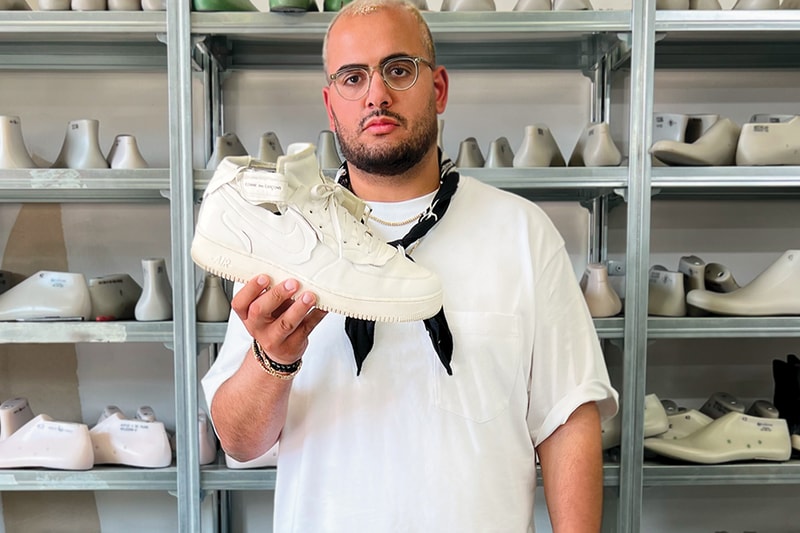
Fardin Hazratizadeh was in elementary school when his family moved from Iran to the Bay Area. Even with the dual culture shocks of flying halfway around the world to live in a new country and learning a new language, he was able to quickly connect with new friends in his new home through a shared love of sneakers. Hazratizadeh has been into sneakers for almost as long as he can remember — the comments from 12 years ago on his long-dormant Hypebeast Disqus account are proof — and he parlayed that love into the industrial design program at San Fransisco's Academy of Art, an internship at New Balance, a job at Versace and, currently, a role as the head of footwear and accessory design at AMIRI.
Though Hazratizadeh has come a long way from the sneaker-obsessed Bay Area kid who used to steal his mom's car to drive to San Fransisco and shop at HUF, his passion and curiosity for sneakers hasn't ebbed a bit. When he joins the video call for his Sole Mates interview from a hotel in Italy, where he's arrived after a jaunt in Paris for an AMIRI runway and is set to quickly depart for a week in London, he's visibly enthused while discussing his work at AMIRI, his footwear background, and, of course, his favorite Nike silhouette of all time: the Air Force 1 Mid, specifically the COMME des GARÇONS x Nike Air Force 1 Mid from 2020. Hazratizadeh loved the Air Force 1 Mid growing up in the Bay Area, and now that he's ensconced in the footwear industry as a fast-rising designer, he sees the Air Force 1 in a different light and appreciates it even more than he did before.
Over the course of a half-hour conversation with Hypebeast, Fardin Hazratizadeh discussed his history with the Air Force 1, his journey in the world of footwear, what the biggest lesson he learned from Salehe Bembury was, how he uses his current position to give back, and, of course, why sneakers are so important to him.

What got you into sneakers?
I was born in Iran, and my family moved to the East Bay in 2004. I was in grade school and spoke very little English, but some of the friends I made were into sneakers, so I felt like I could connect with them through that. We'd be using the school library's computers to look up new releases and go on forums, and I started learning a lot about sneaker culture. There was an element of friendly one-upmanship as well: if one of my friends came to school with a new pair on, I wanted to come to school with a better new pair as soon as possible, which was hard because my dad didn't want to spend money on Air Jordans.
Did you go to shops like Benny Gold and HUF a lot?
The HUF on Sutter Street was one of my all-time favorite shops. They had those three stores at one point in time, and I loved the t-shirt and skate shop but the sneaker store was the most special. My mind would be blown every time I went in there. I'd go to True a lot as well, because it was right on Haight and Ashbury and a bunch of stores like Stüssy were over there as well. Since I lived in the East Bay, it was a bit of a trek to get in to San Francisco. I'd usually take the BART [Bay Area Rapid Transit] train in, but a few times I'd steal my mom's car and drive over. This was before I had my license, but I was a big kid who was the same height as a lot of adults and had facial hair, so it never caused any suspicion from other drivers. I'd go over the Bay Bridge, pay the toll, get my shoes and come back. In retrospect, that was a really stupid thing to do, but I loved it at the time [laughs].
"We'd do everything we could to keep [our Air Force 1s] clean, even buy Force Fields and put them in the toebox so they wouldn't crease."
What silhouettes were you and your friends rocking at the time, and when did the Air Force 1 come into the picture?
I got into the Air Force 1 really early on, because it was the shoe all my friends and I would wear. It wasn't the Air Force 1 Low or the Air Force 1 High, it was the Air Force 1 Mid, all-white, laced loose, strap open and hanging. That was one of the first nice sneakers I ever had, and in the Bay if you were gonna wear Forces they had to be crispy. We'd do everything we could to keep 'em clean, even buy Force Fields and put them in the toebox so they wouldn't crease.
Is that feeling of nostalgia what prompted you to select the COMME des GARÇONS x Nike Air Force 1 Mid for your installment of Sole Mates?
That was definitely a big part of it. These days, it's rare I look at a shoe like "oh my God," because I design shoes for a living and I see so, so many different pairs each and every day. But when these CdG Mids released, it was a super-nostalgic moment for me because it took me back to being a kid in the Bay who wanted to keep his Forces crispy. This was a fresh update on it too: it still had that mid-top cut and all-white color scheme, but it was done in a much more intricate and conceptual way thanks to all the abstract paneling and the super-premium leather.
Do you like any of the other COMME des GARÇONS Air Force 1 collabs as well?
I like most of the shoes that CdG does with Nike because they're super low-key, done up in white or black and have a bit of "if you know, you know" flair because the branding is kept minimal. My other favorite Forces from them are pretty loud though, they're the Lows with the molded plastic figure on the toebox. Those are almost just as much of a sculpture as a shoe, and that makes them super interesting. Besides that, I know it's not an AF1, but I'd be remiss to not mention their Air Foamposite One. Those are beautiful.

As you got a little older, you went to design school at the Academy of Art in San Fransisco. Did you always know you wanted to be a sneaker designer or did you discover that when you went to school?
I honestly didn't know that was a career path. When I was a senior in high school, I didn't know what I wanted to do and wasn't enjoying school at all so I'd skip class a lot. Then, one day, one of my older brothers' friends who went to the Academy of Art for industrial design, which is what I wound up studying, invited my brother and I to a show they had at the school where all the students' work was displayed. It was so eye-opening for me, because I saw what industrial design — and, by extension, product design — really was. There was everything from a Ferrari made out of clay to a water bottle concept and some backpacks, but what caught my eye above all else was a basketball shoe that someone had designed. I don't remember the kid's name, but he'd made this teal-colored shoe that looked super futuristic. That was a lightbulb moment for me: I knew people designed shoes, but never really saw it as a career path until that very moment.
So how did you get from there to an internship with New Balance in Boston?
I was lucky that the Academy of Art didn't require a design portfolio and that anyone with an interest could go there. It's brutally hard and most people who start don't finish, but like I mentioned I studied industrial design, and then my last year they finally added a specific footwear design class. I actually didn't get in because it filled up so fast, but the way that the classes are there is that they're in a huge, open studio, so after that class finished for the day I'd go in there and look around to see what everyone was doing. I already knew how to sketch, but that was how I learned about the rest of the process, from tech packs to performance features. I took what I learned from that and built my own little portfolio of shoe design. New Balance was partnered with the Academy of Art at that time, and they'd offer internships in Boston.
One of my friends who actually did get into that footwear design class got the internship from New Balance, but decided he didn't want to go because he was a California kid who couldn't bear the thought of Boston in the winter. I talked to the director of my school, shared my portfolio with him and begged him to share it with New Balance, which he did. Long story short, I got the internship and moved out there. Funnily enough, I recently hired that same kid as my assistant designer at AMIRI when I started here, and now he's one of the top designers at the brand.

When you got to New Balance, you were mainly focused on designing perfomance products. What did working on that type of footwear teach you, and did any of the lessons you learned there apply to your later work at Versace and AMIRI?
I was tasked with creating "field of play" products, which included trail running, baseball, soccer and tennis shoes and cleats. It really expanded my perspective on footwear, because New Balance did so much internal testing and we'd design off that research, like creating a cleat that would support the specific pressure points of a baseball player. I learned about the more technical aspect of designing there, and found out about different footwear materials in a way I couldn't at school. To this day, that experience helps me because I know how certain materials will respond to certain situations, and, by extension, that knowledge helps me keep my designs functional.
Versace, on the other hand, was a totally different approach and market. You just needed some cool shoes [laughs]. If there was a new runway, you'd have to design specifically for that, and it would be cool to see your work displayed on the runway, where before I'd see my creations on the tennis court or baseball field.
"There’s a lot of exaggerated footwear out there in the social media age, but most of it can’t be manufactured en masse or doesn’t translate into sales."
There’s a lot of exaggerated footwear out there in the social media age, but most of it can’t be manufactured en masse or doesn’t translate into sales
You worked with Salehe Bembury at Versace too. What was the biggest lesson you learned from him?
Salehe taught me so much about footwear, and also taught me a lot about how to create a brand of my own by connecting the dots around my personality, which I'm still working on, as well as how to maneuver in the footwear industry. Above all else, what I learned from him is the importance of creating commercially viable designs. There’s a lot of exaggerated footwear out there in the social media age, but most of it can’t be manufactured en masse or doesn’t translate into sales. Walking that line between design elements, personality and product sales is an art, and I learned about it from the best.
Do all of those different experiences make you feel as if you can appreciate a childhood favorite like the Air Force 1 even more than you did when you were a kid because you see the totality of its impact in a way you couldn't before?
100%.You learn that a shoe like the Air Force 1 is more than just a shoe you like to wear. There're so many different reasons it was able to do what it did in the '80s and is still able to do what it does today, from design to marketing to cultural cachet. Every brand wants to have their own version of that shoe or something like the Chuck Taylor too, shoes that are similar but designed in their own way. Any brand can sell a shoe like that because the silhouette is so familiar to the eye that even someone who's not a sneaker person knows it when they see it.


You've mentioned that having a sense of humor and remaining lighthearted helps with your work. How do you keep footwear fun and remain a fan when you have so many professional responsibilities around it?
I've loved shoes for so long, and will always be able to display that love in one way or another. When I was a kid, that love might have been expressed through buying a new pair where now it's expressed through creating a new colorway, putting together an interesting combination of materials or crafting a new design. I'm lucky enough that being in this field doesn't really feel like a job in some ways. I think that applies to all fields of design, because even if you're designing a new chair or a new purse you're putting an element of yourself in it in some way. Those little elements are what mean something to me, and any new product I do I make sure there's something new within it that sells it to myself as well as sells it to the market.
Earlier, you said that your parents were (understandably) loath to shell out money for expensive new sneakers like Air Force 1s when you were a kid. As someone who's responsible for creating intricate, artisanal, high-end footwear now, do you ever think of how you can give back to the next kid like you?
Since the AMIRI market is very, very high-end, it's tough to give back through product, but I've always thought that the best way to give back was by sharing knowledge. I'm always learning myself, but someone could possibly learn something from me as well. I don't have the world's biggest social media following, but it's crazy how many people will reach out to me asking for feedback on their projects and designs. I'm always happy to share what I know, and provide pointers on what I think someone who reaches out to me should do next, or how they can angle their approach to get where they want to go.
"I want people to know [AMIRI] for shoes, to come to us for shoes before they go to any other brand."
Do you have a "north star" goal in mind for your footwear design career, or are you more focused on enjoying the experience and learning as much as you can?
It's good to think ahead and work towards something. However, I think a lot of people aim for some super far-out, unrealistic goal instead of focusing on what they're doing at the moment. Now that I have a great opportunity at AMIRI, my goal is to build out the footwear business as much as possible. I want people to know us for shoes, to come to us for shoes before they go to any other brand. I'm just trying to fill as many buckets as I can at the brand, from footwear design to style forecasting. I think that approaching my career that way creates opportunities for even more people like me in the future.
Why are sneakers important to you?
Man, trying to explain that always throws me for a loop [laughs]. Well, professionally, they're my job, but personally they're so important to me. I saw a quote on social media the other day that noted you'll look at a person's shoes before you look them in the eye, and that's because someone's shoes — how they wear them, how they style them and how they treat them — can say so much about their personality.












